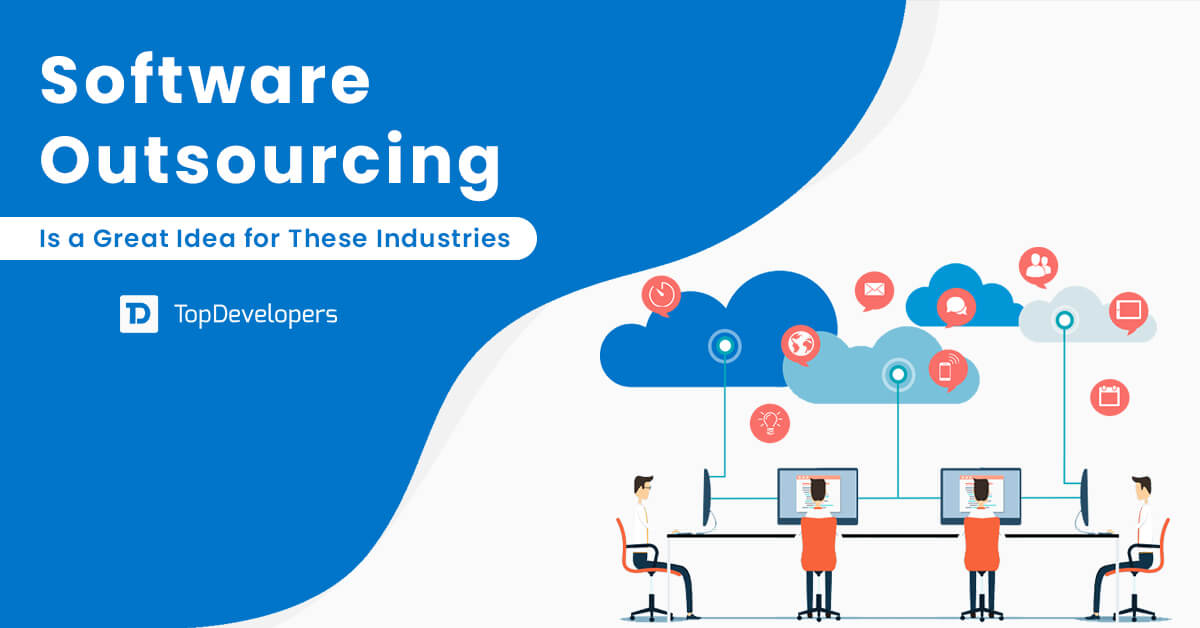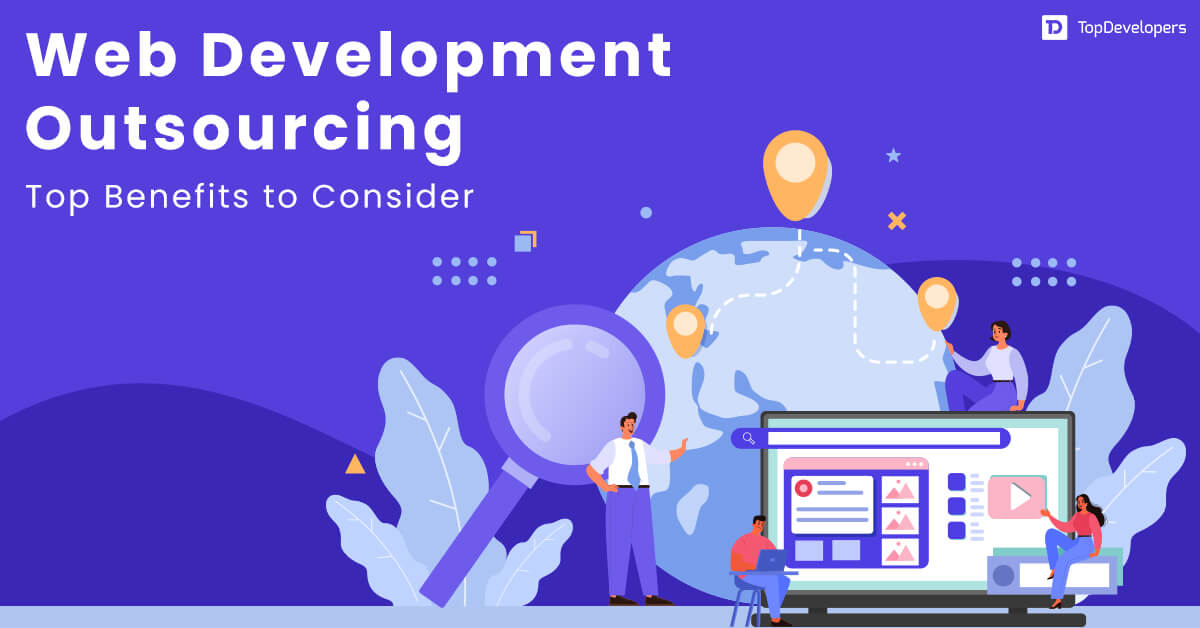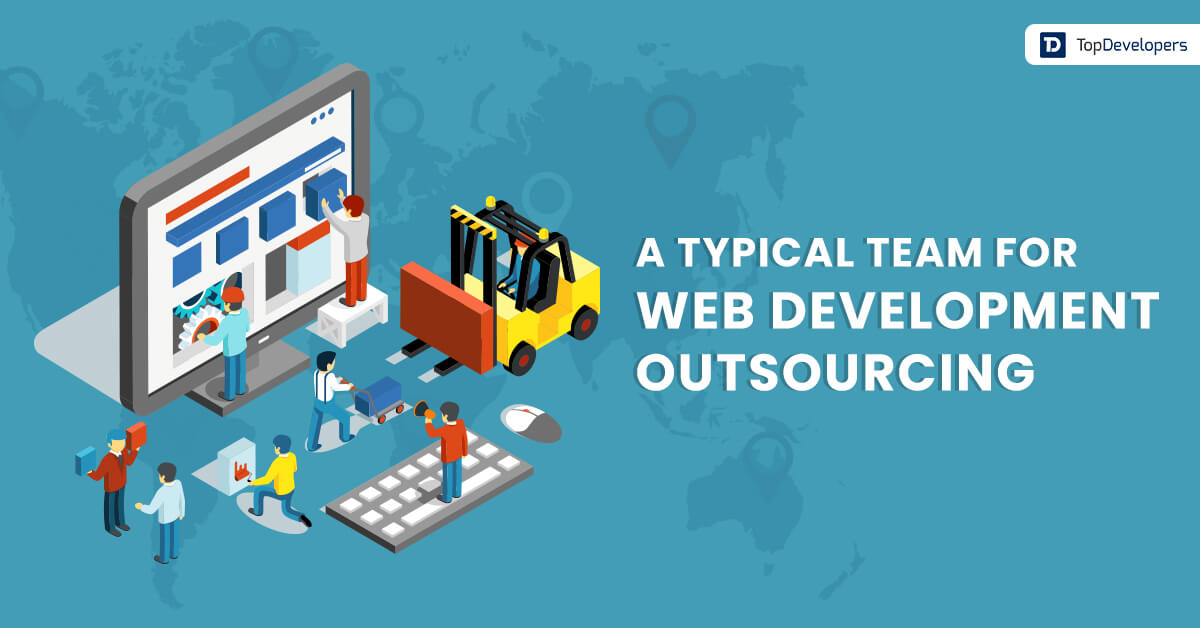
Outsourcing or extending the team is not a new practice. It has been there for years. But as the technologies and hiring models have grown and changed, it is essential for you to understand and mark a clear line between two major practices worldwide – IT staff augmentation and IT outsourcing.
Both of these methods have special sources to get the best services from. You can hire top professional IT staff augmentation companies as well as offshore to take up your entire project as outsourcing and it is easy to find and contact them. But do you know who is what? This guide helps you gain complete knowledge of both methods.
Let us explore each of them and learn which one is better for your project.
Table of Contents
- IT Staff Augmentation vs. It Outsourcing: An Overview
- The Difference Between Staff Augmentation and Outsourcing
- What to Choose for Your Project – Topdevelopers’ Advice
- FAQs Regarding IT Staff Augmentation VS IT Outsourcing
- What are the types of outsourcing?
- What are the types of staff augmentation?
- When to choose IT outsourcing?
- When to choose IT staff augmentation?
- How do you manage staff augmentation?
- Does staff augmentation impair independence?
- What are the benefits of IT staff augmentation?
- What are the benefits of IT outsourcing?
IT Staff Augmentation vs. It Outsourcing: An Overview
To explain these two major services or practices, in short, IT staff augmentation is adding up think tanks and brains to your existing team temporarily, whereas outsourcing means handing over the entire IT project to an offshore software, web, or mobile app development company in outsourcing hubs like India. Now, which method to choose depends on myriad factors, and for that, you need to go through this short guide on IT staff augmentation Vs IT outsourcing.
To understand, let’s first check out these stunning statistics from the research giant Statista –
- The IT outsourcing revenue is likely to reach US $512.5 billion in 2024
- The same revenue is expected to grow at a CAGR of 10.99% between 2024 and 2028 reaching a whopping figure of US $777.70 billion by 2028
- Most revenue will be shared by the US (US $185.50 billion) in 2024
- In the IT outsourcing market, the average spend per employee is likely to account for US $146.10 billion in 2024
Why are these staggering figures so impressive? This is due to immense demands in web and mobile apps to build business solutions. There are myriad benefits of software development outsourcing that most enterprises know all over the world. Specifically, businesses from the first world countries have been outsourcing or seeking IT staff augmentation for years because they get ample cost, resource, and infrastructure benefits. And, this trend is not going to stop sooner. But then, there are two distinct practices in IT outsourcing or offshoring: IT staff augmentation and IT outsourcing.
Now, let us dig deeper into these two tactics so that you exactly know what your business wants and how to benefit from the best model.
The Difference Between Staff Augmentation and Outsourcing
There are major factors you can keep as criteria to decide between IT staff augmentation and IT outsourcing to an offshore company. Essential factors to consider are mentioned below –
- Cost implications
- Control and management
- Flexibility and scalability
- Quality and expertise
- Onboarding
- Knowledge
- Purpose
- Responsibility
Now let us check each one of them and compare the two methods: staff augmentation and outsourcing the IT projects –
Cost Implications
This encompasses the financial considerations and cost estimation for IT staff augmentation and outsourcing IT projects such as direct labor cost, potential vendor charges, and management overheads. Outsourcing and augmentation have different approaches to cost-effectiveness.
Staff Augmentation
You typically pay for the hourly rate of the augmented workforce with markup from the IT staff providing agencies. This could be cost-effective for short-term tasks or projects as you will avoid training and equipment costs that are otherwise incurred with full-time employees. Nevertheless, managing augmented IT staff will add overheads.
IT Outsourcing
IT project outsourcing often ends in significant cost savings, too. This is true especially when the projects are handled in outsourcing hubs like India with lower development costs. You don’t incur expenses such as salaries, wages, benefits, or office infrastructure for the IT outsourced teams. Nevertheless, upfront service provider selection, negotiation for terms/conditions and budget, and potential communication barriers may add complexity to your outsourcing which may add some costs.
Control and Management
Control and management refer to the extent of your power to regulate the entire project, decision-making, and day-to-day operations. In this, it is essential to how much power or authority you have over your own project.
Staff Augmentation
Here, in this model, you will retain more control over the project and daily jobs because staff augmentation works in sync with your own team. It allows for closer collaboration and faster decisions. But you need to spare some extra time to manage the team and resources additionally from your internal teams.
IT Outsourcing
You relinquish some control over routine tasks and project execution. Also, you need to consider the efforts it will take to communicate and collaborate with the outsourced remote team of IT experts. A good option is to have the top IT outsourcing companies who manage the entire project and are accountable for meeting project objectives and business goals so that you can focus on other core functions.
Flexibility and Scalability
In flexibility and scalability, the dimension focuses on how easily you can scale the team up or down to accommodate an unstable load of work and/or project requirements. Both staff augmentation and outsourcing have their own ways of handling this.
Staff Augmentation
Here, scaling of the team up and down is easy. You can add or remove IT staff as per your project needs and changes. This ends up in remarkable adaptability for fluctuating workloads.
IT outsourcing
Here, in this model, scaling the team is possible but a bit complex or slower. This is because the changes in the workforce will require negotiating with IT companies through legal contracts. This is time-consuming and it will affect your overall project development time. Nevertheless, some global leaders in IT services offer flexible engagement such as the ‘Dedicated Model’ wherein you can scale up or down the team whenever needed.
Quality and Expertise
In this aspect, you see the level of skills and experience available for the IT project. Staff augmentation and IT outsourcing both provide quality and expertise but their approaches are a bit different.
Staff Augmentation
In this, you can target specific skill gaps and you can easily select specialists with the exact domain expertise you want and qualifications you seek for. It significantly improves the quality of your product being executed. But the vetting process to trace and integrate these experts is time-consuming and thus it may delay your project.
IT Outsourcing
Here, IT outsourcing companies maintain large talent pools and therefore they give you access to a range of IT skills compared to your local market. This is immensely beneficial to find niche expertise such as AI/ML, Blockchain, IoT, and other advanced technology experts in software, mobile and web app development. However, you need to check the level of expertise across individual team members. Also, you need to mind the cultural and communication barriers.
Knowledge Transfer
This focuses on grasping and sharing project knowledge within the teams whether internal or external. IT staff augmentation and IT outsourcing have different approaches to knowledge transfer depending on which you can decide your suitable model.
Staff Augmentation
The close collaboration among existing team members and the IT staff augmentation by an agency fosters organic knowledge transfer from start to finish of the IT project. The experienced experts work in sync with your team and can rapidly share their expertise and gain inputs from your teams as well. Ultimately, it will benefit in knowledge exchange, and as a result, the product will be superior.
IT Outsourcing
Geographical and language barriers in communication may bring in some challenges in knowledge transfer for IT outsourcing. Disseminating the sharing of knowledge across physical distances or dialect differences could be very complex if the outsourcing company is not well-known and internationally exposed. However, reputed IT outsourcing companies in offshore hubs are well-versed in the international language and use licensed tools to communicate.
Resource Onboarding
Onboarding refers to the process of integrating new team members into your project or product. Both IT outsourcing and IT staff augmentation have their own ways of bringing on talent.
Staff Augmentation
Because IT staff augmentation works onsite within your premises or team structure, the onboarding processes are quite fast and hassle-free. Staff augmentation for IT projects works immediately and the members can collaborate with the existing workforce to leverage their knowledge and cut short the learning curve. Ultimately, it fosters swift integration and shortens the SDLC period.
IT Outsourcing
For onboarding, IT outsourcing presents a steeper learning curve for several valid reasons – potential time zone differences, for example, can disrupt the communication between you and the IT outsourcing companies. Additionally, you will have to depend on emails and virtual meetings compared to in-person interactions. This may slow down the knowledge transfer and escalation solving. There is also a consideration of company culture difference and you may need to adopt their styles of services. This, in turn, delays the onboarding process.
Purpose
The purpose means the core reason or intention behind the project. within the realm of IT projects, the purpose dives deeper into addressing business needs, solving a technical challenge, and delivering business value by adding external help.
Staff Augmentation
The sole purpose of IT staff augmentation is to address specific skill gap concerns or resource limitations in your present IT workforce. This staffing method allows you to get a transient boost in your team’s capabilities and productivity. You can have a skilled IT professional or the entire team to complete a particular task or project. It is a targeted approach to ensure that you have the right talent on board to meet your business goals without getting into permanent hires.
IT Outsourcing
In this method, the purpose is to delegate the whole IT project or function to an offshore IT company. These projects may include a wide range of activities such as ongoing tasks, building a software, web, and mobile app from scratch, market research, peer research, and consumer behavior research-based digital products. IT outsourcing enables you to have vendor’s expertise at remarkably lower costs. This will also free up your internal resources to focus on high-value tasks or strategic initiatives for your business.
What to Choose for Your Project – Topdevelopers’ Advice
TopDevelopers.co believes in empowering businesses with authentic and resourceful guides. Both the methods of IT staff augmentation and IT outsourcing have their own pros and cons. TopDevelopers helps you choose the best and most suitable way to accelerate your IT project with affordable costs yet no compromise on quality.
However, for a quicker glance, here is the user-friendly table:
| Factor | Staff Augmentation | IT Outsourcing |
|---|---|---|
| Project Scope & Complexity | Suitable for simpler projects, may require a hybrid approach for complex ones. | Can handle enterprise-grade complex projects with access to broader expertise and potentially lower overall project costs. |
| Project Timeline | Ideal for short-term projects due to agility and potentially lower cost. | More cost-effective for long-term projects due to scalability and potentially lower ongoing labor costs. |
| Internal Skillset Availability | Fills limited skill gaps within the existing team. | Offers access to a wider talent pool, potentially eliminating the need for internal skill development. |
| Communication & Collaboration Needs | Facilitates closer interaction and knowledge transfer. | Requires clear communication channels, but some vendors offer dedicated knowledge transfer processes to mitigate geographical or communication barriers. |
| Risk Tolerance | Provides more control over project execution. | Shifts some risk to vendor, but reputable vendors offer clear contracts and service level agreements (SLAs) to mitigate risk. |
| Security & Data Sensitivity | Offers tighter data control for highly sensitive projects. | May be suitable with robust security protocols established by the vendor. Conduct due diligence to ensure data security measures align with your needs. |
| Vendor Reputation & Experience | Not applicable (internal staff) | Crucial to consider; choose a reputable vendor with a proven track record in your project’s domain for successful outsourcing. |
| Contractual Terms | Not applicable (internal staff) | Essential; ensure clear, well-defined contracts with service level agreements (SLAs) that outline expectations and hold the vendor accountable. |
| Cultural Compatibility | Not applicable (internal staff) | Consider potential cultural differences when working with outsourced teams, but clear communication strategies and established processes can help bridge these gaps. |
The fair comparison in the table and the factors described earlier in this guide can help you decide what suits your business objectives.
Disclaimer: TopDevelopers.co provides its suggestions based on specific criteria and considerations. It is the company that will take the final call to consider the model to accomplish their IT needs. TopDevelopers.co hold no responsibility in providing any guarantee in choosing IT staff augmentation or IT outsourcing methods.
FAQs Regarding IT Staff Augmentation VS IT Outsourcing
What are the types of outsourcing?
There are several types of outsourcing and different people opine differently. Nevertheless, here are some of the common ones –
- Project outsourcing: here, you assign the entire IT project to an offshore IT agency providing outsourcing services.
- Process outsourcing: in this, you delegate the ongoing business process to an IT outsourcing company; for example: IT support for maintenance.
- Knowledge process outsourcing: known as KPO, here you outsource the tasks that require specialization in the domain (for example, niche development).
What are the types of staff augmentation?
Similarly, just like outsourcing, there are different types of IT staff augmentation. Here are some of the common types:
- Independent contractors: in this, you hire skilled IT individuals for a particular project on a freelancing basis.
- Authentic IT staff augmentation agencies: more reliable, these are the professional IT staffing companies with a consultative approach to your project needs.
- Managed service providers: also known as MSPs, it is like adding external resources for specific IT functions or staff augmentation needs.
When to choose IT outsourcing?
Outsourcing IT projects is beneficial for specific conditions. For instance, it is good for long-term projects where you want to save costs but don’t want to compromise on quality. Plus, you will have wider access to designers and developers, and other experienced team members. Outsourcing is also considered for leaving everything on the service provider and setting yourself free for major tasks.
When to choose IT staff augmentation?
IT staff augmentation is suitable for short-term projects where you need to fill specific skill gaps within your team. It is also good wherein you want to have total control over your project. In IT staff augmentation, you will also have a choice to foster closer collaboration with IT specialists.
How do you manage staff augmentation?
IT staff augmentation can be managed by integrating specialists in your team and before that briefing them all about your culture, working process, and methodologies. You can manage them with clear communication and resources. IT staff augmentation is also managed by choosing individuals with experience in teamwork.
Does staff augmentation impair independence?
Not at all. IT staff augmentation does not impair your independence because it supplements your team and does not replace it. You still retain complete control over the project and can make decisions as you want.
What are the benefits of IT staff augmentation?
IT staff augmentation brings many benefits such as you can have targeted skill acquisition to fill the skill gaps. Also, you can speed up the project completion with IT masters joining your team. Additionally, IT staff augmentation can remarkably lower the overall costs of the short-term needs of your IT project.
What are the benefits of IT outsourcing?
Just like IT staff augmentation, outsourcing IT projects also brings myriad advantages. For instance, it is potential for lower labor costs ultimately saving a big chunk for your IT project. Also, by outsourcing IT projects, you can have access to global talent in information technologies and tools. IT outsourcing is also known for its scalability as you can up or down the IT staff as per your project requirements. And lastly, it gives you peace of staying stress-free because the entire project is now the responsibility of an offshore IT agency.
 Avantika Shergil
| May 21, 2024
Avantika Shergil
| May 21, 2024
Avantika Shergil is a technology enthusiast and thought leader with deep expertise in software development and web technologies. With over 8 years of experience analyzing and evaluating cutting-edge digital solutions, Avantika has a knack for demystifying complex tech trends. Her insights into modern programming frameworks, system architecture, and web innovation have empowered businesses to make informed decisions in the ever-evolving tech landscape. Avantika is passionate about bridging the gap between technology and business strategy, helping businesses build customized software and website, and understand about different tools to leverage effectively for their ventures. Explore her work for a unique perspective on the future of digital innovation.





